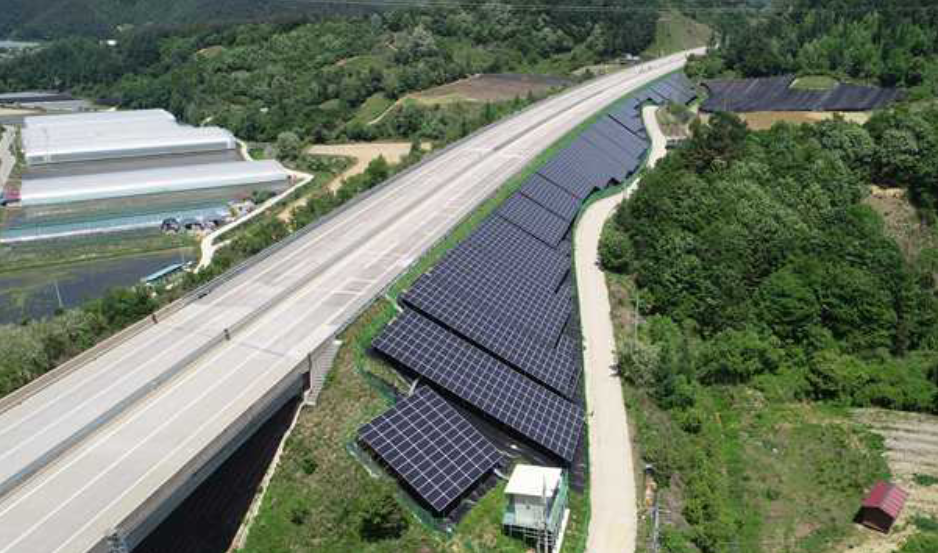South Korea is seeing strong development of solar energy projects and is beginning to suffer from limited land availability for the deployment of large-scale solar plants. As a result, the country is seeking alternatives to agricultural surfaces for locating MW-sized arrays. Floating PV is seen as one of the possible solutions, with big projects having been announced in the course of the past two years.
Following the example of the Netherlands, which is also facing strong PV growth and serious issues in identifying locations for solar parks, the Korean government has now also decided to launch a plan to deploy large-scale projects along highways.
The Ministry of Land, Infrastructure and Transport (MOLIT) currently operates around 319 solar arrays totaling 149 MW at several idle sites managed by the Korea Expressway Corporation (KEC), which runs the toll roads of South Korea, and has decided to give privates companies the opportunity to lease other idle sites to deploy their projects.
The surface will have to be leased for a 20-year period and developers will have to pay an unspecified usage fee. KEC will offer surfaces on the slopes of the embankment of highways, the green areas around junctions, the rooftops of buildings, and parking lots.
The South Korean government is aiming to deploy around 30 MW of solar in 2021 and 243 MW by 2025. It also wants to add hydrogen fuel cell facilities with a combined capacity of 50 MW.
Popular content
“We will strive to accelerate the realization of carbon neutrality by continuously expanding the production of new and renewable energy on highways,” said Sang-Heon Lee, manager of the Road Policy Division at the MOLIT.
In late March, the ministry also announced a plan to build solar using railway infrastructure. “Through this agreement, installation of a solar power generation facility to a total scale of 25 MW will be jointly promoted by the end of 2022 — 19.8 MW on a rail yard and a station parking lot and 5.2 MW of solar power on landmark train stations, such as Seoul Station,” the government stated at the time. “Starting with this cooperation project, the MOLIT and Korea Railroad Corporation will continue to expand cooperation with other organizations such as local governments and power companies and increase the scale of railway solar power generation up to 456 MW by 2030.”
In the Netherlands, research institutes and private companies across the densely populated country have tried to prove the feasibility of solar projects on surfaces that do not occupy agricultural land, including dikes, rooftops, road noise barriers, onshore and offshore water surfaces, as well as bike lanes.
This content is protected by copyright and may not be reused. If you want to cooperate with us and would like to reuse some of our content, please contact: editors@pv-magazine.com.



2 comments
By submitting this form you agree to pv magazine using your data for the purposes of publishing your comment.
Your personal data will only be disclosed or otherwise transmitted to third parties for the purposes of spam filtering or if this is necessary for technical maintenance of the website. Any other transfer to third parties will not take place unless this is justified on the basis of applicable data protection regulations or if pv magazine is legally obliged to do so.
You may revoke this consent at any time with effect for the future, in which case your personal data will be deleted immediately. Otherwise, your data will be deleted if pv magazine has processed your request or the purpose of data storage is fulfilled.
Further information on data privacy can be found in our Data Protection Policy.